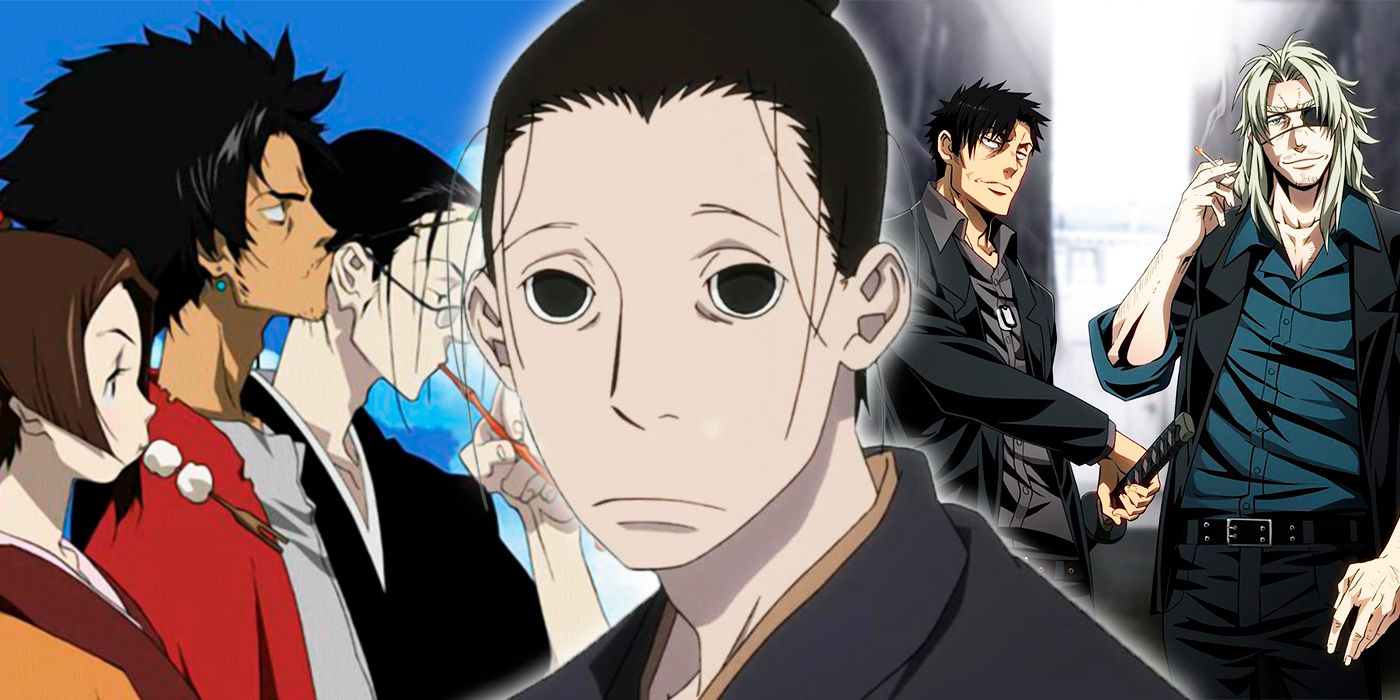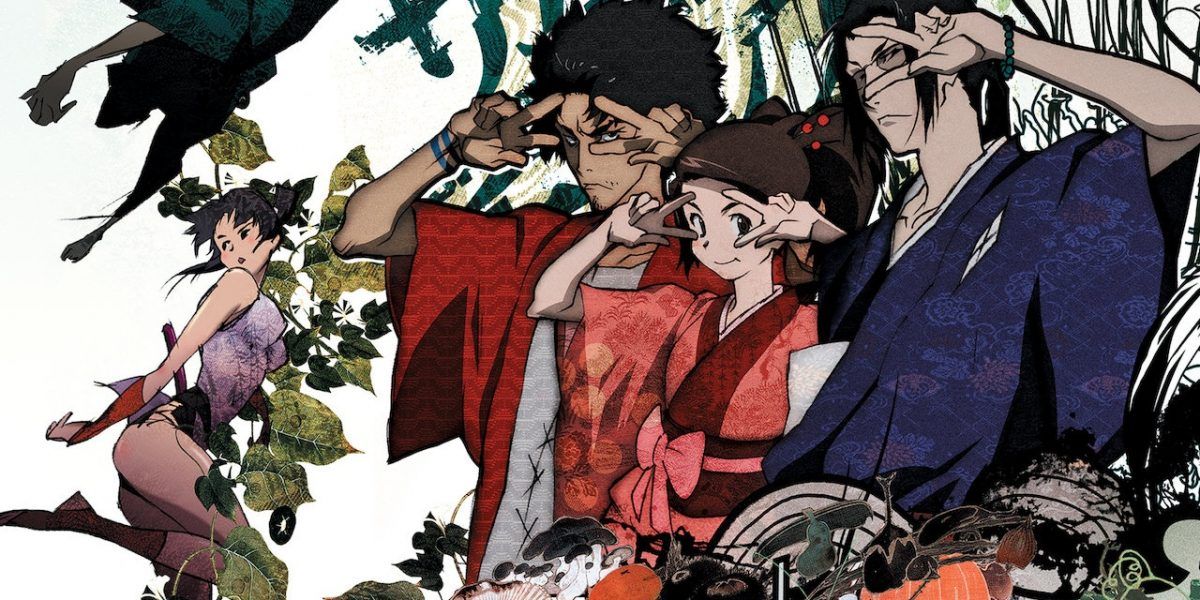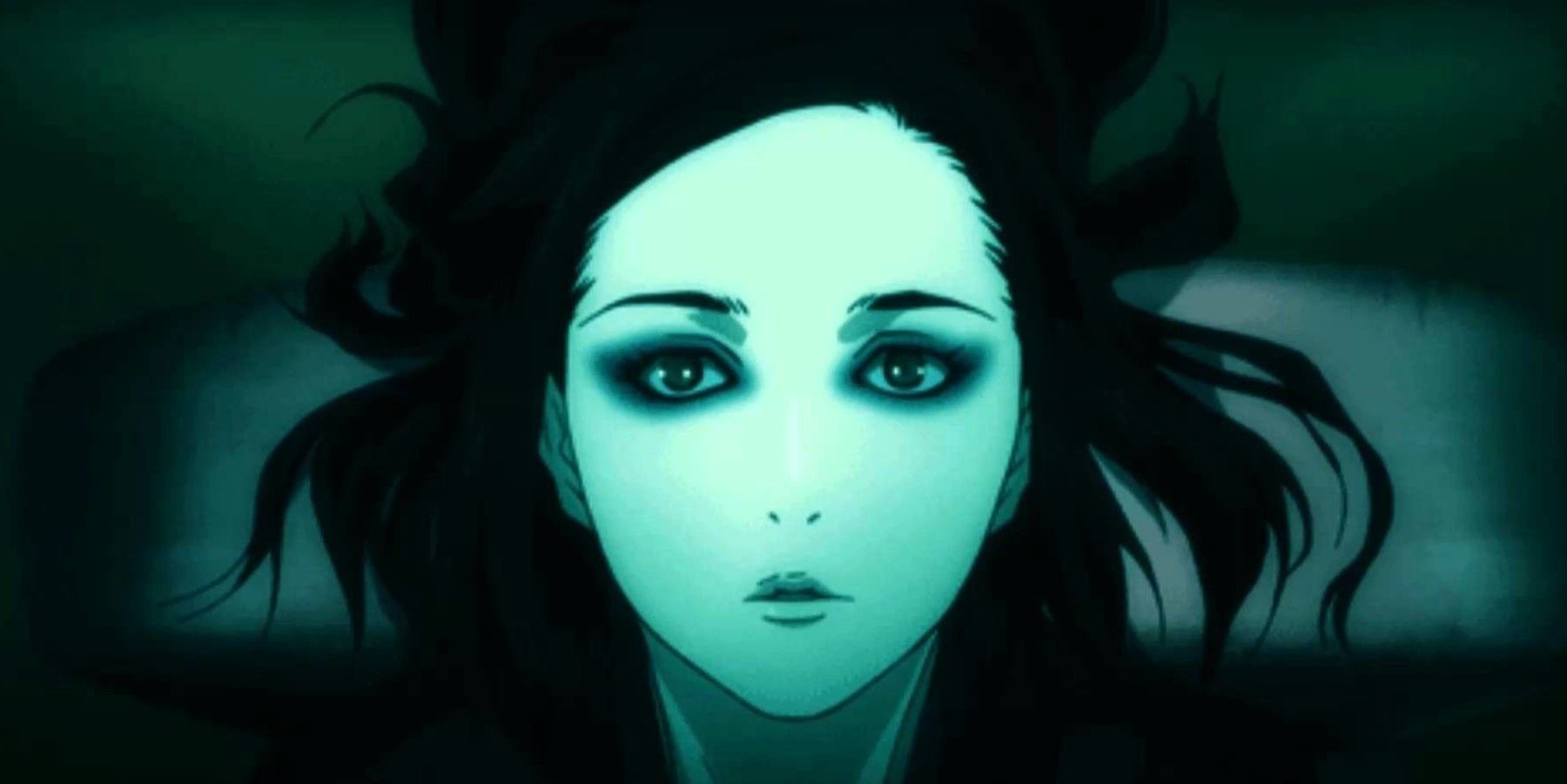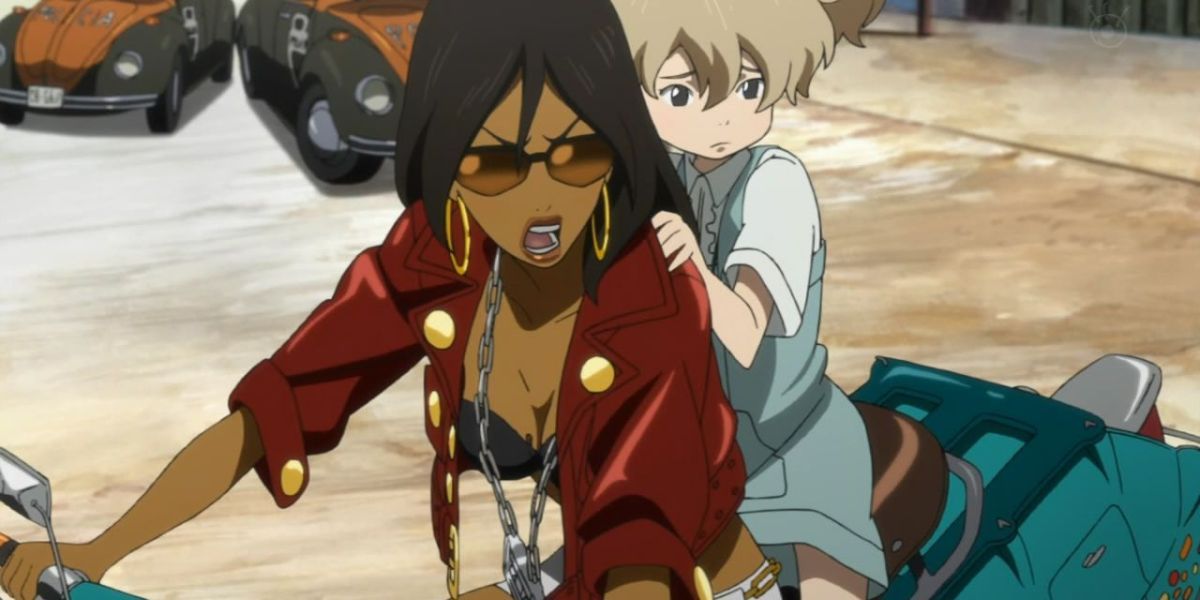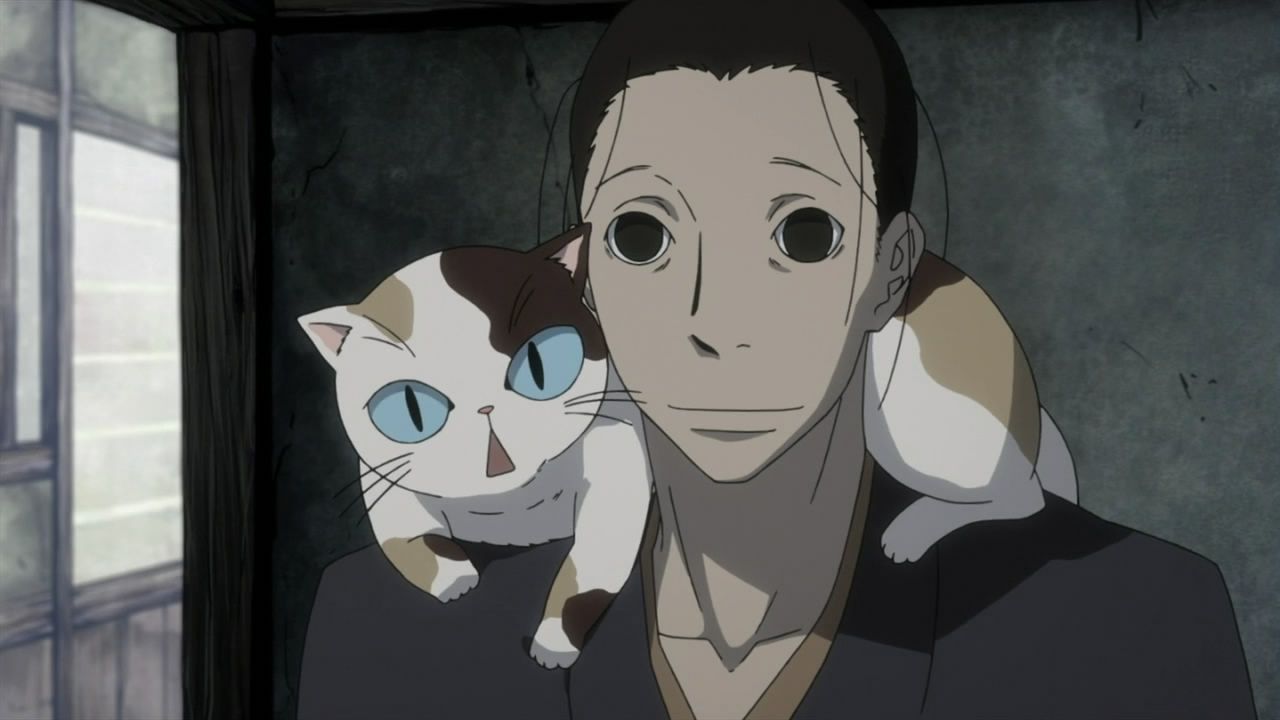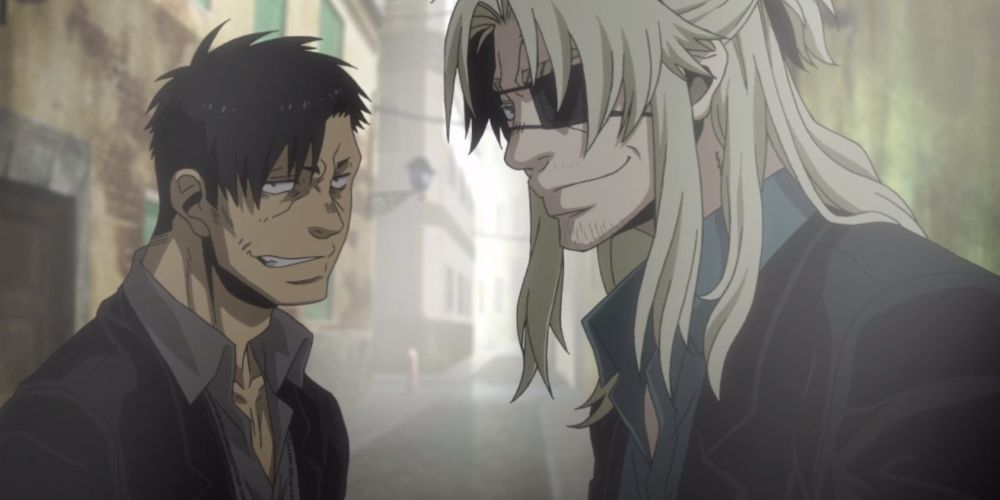While many anime studios have been around for decades and show no signs of slowing down, sadly, others have not been as long-lived. Such is the case with Manglobe, which was founded by former Sunrise producers Kobayashi Shinichirou and Kochiyama Takashi in 2002 but filed for bankruptcy a scant 13 years later in 2015.
However, during the years it was active, the studio became especially known for producing anime-original shows rather than simply adapting existing works from manga, games or light novels. This meant Manglobe was behind the creation of some truly unique and innovative series, several of which are still thought of today as classics of the medium and/or gained mass mainstream popularity, both domestically and in the West. Here are five of the very best of the former studio’s titles.
Samurai Champloo (2004-05)
This one barely needs an introduction. Manglobe’s very first anime series, Samurai Champloo, put the studio on the map, and for good reason. The second televised anime directed by acclaimed director Watanabe Shinichiro following his groundbreaking Cowboy Bebop, Samurai Champloo is set in Edo-period Japan and revolves around a wandering vagrant named Mugen, a masterless samurai called Jin, and former tea waitress Fuu as they travel the land in search of a mysterious “samurai who smells of sunflowers.”
Not only has Samurai Champloo aged incredibly gracefully in terms of its visuals, but it remains one of the most easily recognizable anime titles for Western fans today. It also makes for a highly accessible show thanks to its character-driven story and episodic format, as well as for its excellent voice acting in both Japanese and English.
Ergo Proxy (2006)
The domed city of Romdo is one of the last surviving human civilizations, in which humanoid-like robots called AutoReivs have been created to serve their human masters by carrying out everyday tasks. However, some of these AutoReivs have begun to contract the Cogito Virus -- a disease that ‘inflicts’ them with self-awareness. When Re-l Mayer, the granddaughter of Romdo’s ruler, is assigned to investigate such incidents, she uncovers a lot more than she bargained for, including some uncomfortable truths about her supposed utopia.
On the surface, Ergo Proxy sounds like any one of a number of post-Evangelion anime shows -- a post-apocalyptic setting, heavy psychological themes, and a deep-dive into complex philosophy and symbolism that may or may not come across as pretentious depending on the viewer. However, the sheer stylishness with which Ergo Proxy carries all this out is undeniable, from its distinctive character designs to its banger soundtrack. For viewers who found themselves drawn in by the likes of other somewhat arcane productions like Serial Experiments Lain, Boogiepop Phantom and Texhnolyze, Ergo Proxy is a must-watch.
Michiko & Hatchin (2008-09)
Set in the fictional Latin American country of Diamandra, the titular Michiko and Hatchin, a mother-daughter duo, find themselves on an epic road trip in order to track down Michiko’s former lover and Hatchin’s father. However, the police are hot on their tail, as Michiko is a recent escapee from one of the most heavily guarded prisons in Diamandra -- and police officer Atsuko has a personal score to settle.
Directed by Yamamoto Sayo -- an understudy of Watanabe Shinichiro’s for Samurai Champloo, and who would go on to sit in the chief director’s chair for Yuri on Ice -- Michiko & Hatchin is fun yet thoughtful, vivacious yet unconventional. It’s also an unmissable feminist adventure, and an anime that’s vastly under-watched despite being, on the surface at least, mainstream enough for anyone to enjoy, whether they’re a veteran anime viewer or someone newer to the medium. In fact, the opening credits sequence alone is a work of art, and well worth a watch in its own right.
House of Five Leaves/Saraiya Goyou (2010)
Wandering masterless samurai Akitsu “Masa” Masanosuke is a skilled swordsman, but his extremely timid personality means his employers often dismiss him for his severe lack of confidence. Alone and despondent, he comes into contact with a man named Yaichi, who hires Masa, ostensibly on a whim, as his bodyguard. However, Yaichi turns out to be the head of a gang known as the Five Leaves, leading Masa to question his own actions and ethics as a samurai.
Like Samurai Champloo, House of Five Leaves is largely episodic in nature, although it has a unique look and tone that’s both very distinct and very un-anime-like at times. Although the general art style may be off-putting to some viewers at first, the show is remarkably undramatic and even laid-back, making for an unexpectedly easygoing watch. Oddly uplifting despite its low-key mood, the series seems purposefully understated in most ways but is absolutely deserving of a look.
Gangsta (2015)
Nicholas “Nic” Brown and Worick Arcangelo are Handymen; mercenaries who take on especially dirty or difficult jobs for the police and mob syndicates alike in the city of Ergastalum -- a haven for outlaws and criminals of all stripes. The duo is soon joined by Alex “Ally” Benedetto, a former prostitute with a heart of gold who is able to begin a new life after Alex and Nicholas eliminate the gang holding her captive.
While Gangsta may sound rough around the edges in more ways than one, there’s a surprising amount of depth and nuance to be found here, including in the show’s main characters. Nic is a deaf ex-child mercenary who communicates mainly through (remarkably accurate) sign language, while Worick is a one-eyed gigolo whose abusive family was killed by Nic -- once Worick's personal guard. A victim of Manglobe’s sudden bankruptcy, Gangsta remains sadly unfinished (although the manga is still ongoing). Nonetheless, it’s an extremely atmosphere title with plenty of attention to detail and far more subtlety than many might give it credit for.

